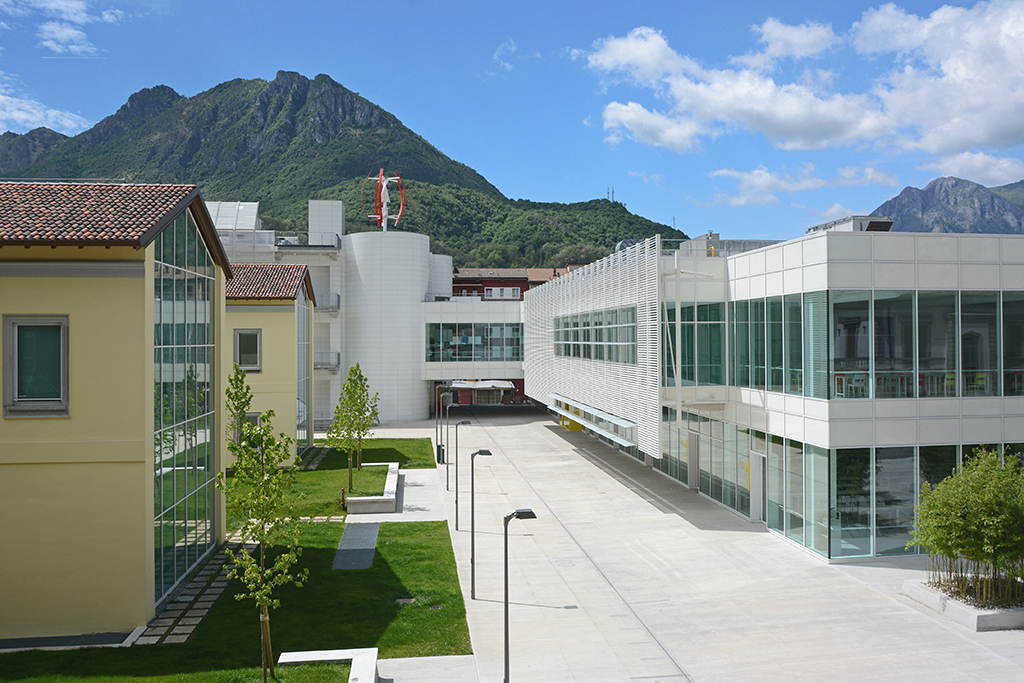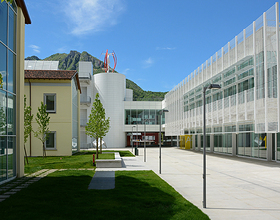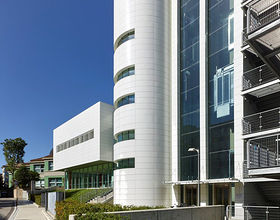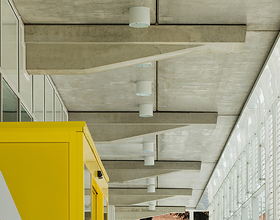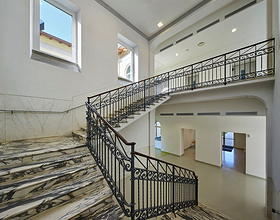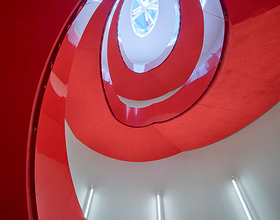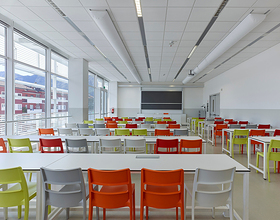MILAN POLYTECHNIC – NEW UNIVERSITY POLE IN LECCO
-
The Milan Polytechnic branch of Lecco, was founded in 1989 to meet the University’s willingness to be present and close to the production in the territories and to the request of the Lecco area, rich in factories and operation, of having a research center for a competitive development.
The new University Campus, one of the first italian examples with the Anglo-Saxon style, is proposed physically and ideologically as ‘Open University’.
Built on the site of the abandoned city hospital, in the south of the city of Lecco, the sense of continuity with the neighbouring historic and urban center, led to the openness of the university space to many new forms of use and relationship. A system of open and closed areas, accessible to anyone, bring out a concept of urban continuity that goes beyond physical and dynamic aspects.
The initial vision of the project has been transformed into precise guidelines: the willingness to open up new places for the city, create organic fluidity, delete all sorts of barriers, both physical and mental, remove the borders. Crossed perpendicularly, the Campus connects two parallel streets shortening the distance between them: it becomes road, bridge, integrated part of the city.
This place, in the midst of the urban fabric, is carrier and producer of science, among the people that runs and looks at “polytechnic showcases”, dwelling in the wireless garden, connected with the world.
The image of the building is perceived for its qualities of lightness, transparency, luminosity, perspective permeability, but at the same time it silently stands out as a symbol of culture and innovative spirit.
The materials and colors used are drawn from the “chromatic-material palette” linked to the history of the place and their symbology: aluminum, steel, glass. The color, white-RAL 9016, white as drawing paper, colors the shell, representing the intellectual purity and chastity of the technical culture ready to burgeon.
Symbol of the absolute, from Malevich to Moby Dick, the white of the shell varies with the change of hours and seasons, turning the gentle surfaces etched in vigorous chiaroscuro that change the perceptual framework. In addition to the strong visual impact, which combines a consistent association between new areas and the recovery of monumental spaces, the importance of the project lies in the technological efficiency and in the design choice which included the use of industrialized building and energy systems in accordance with the principles of eco-sustainability.
The new structure is entirely composed by a modular kit of durable concrete structural elements and high-performance light elements in aluminum, steel and glass for the shells, expressly made from specific design of Paolo Bodega Architettura.
Prefabricated concrete elements that compose the structural part of the building such as beams, pillars, slabs and shelves are covered by particular layers designed to meet the specific needs in terms of shell performance, such as exposure, insulation, and energy interception, made from transparent, opaque elements, filtering and photovoltaic brise-soleil, and dynamic wings that allow a better control of radiation.
The new building is energy class B; for the reduction of energy consumption and CO2 emissions into the atmosphere, the resources present ‘on site’ such as water, sun, and air have been used as “generators” of renewable energy.
Climatization is managed by a modular system of heat pumps that use groundwater. At the top of the facades are placed photovoltaic panels producing 20 kW of electricity, solar thermal collectors for hot water production and an “S-shaped” vertical wind-rotor.
All building materials and finishing used were chosen with accuracy under their own characteristics in terms of eco-friendliness, recyclability and lifecycle (LCA).
Photo credits: Beppe Raso
1870 Projects

